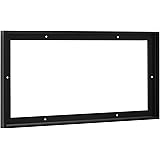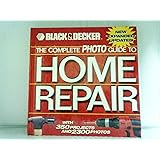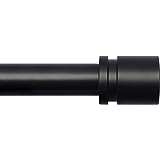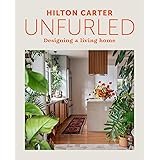Transform Your Kitchen: Smart Solutions for Common Design Mistakes Without Major Renovation
Creating a functional and aesthetically pleasing kitchen is a top priority for many homeowners, yet it’s easy to overlook common design pitfalls. The accompanying video highlights some prevalent kitchen design mistakes and offers insightful, budget-friendly solutions that don’t require extensive renovations. This article expands on those crucial tips, providing deeper context, additional ideas, and data-driven insights to help you reimagine your space.
Your kitchen is often the heart of your home, a space for cooking, gathering, and entertaining. Because of its central role, thoughtful design can significantly impact daily life and overall home satisfaction. Addressing common kitchen design mistakes can dramatically improve both form and function, ensuring your kitchen works harder and looks better for you and your family.
1. Embrace the Efficiency of a Counter-Depth Refrigerator
One of the most impactful yet often overlooked kitchen design mistakes, as highlighted in the video, is opting for a standard-depth refrigerator when a counter-depth model would be far more appropriate. While the initial thought might be a concern for reduced capacity, the benefits of a counter-depth fridge extend far beyond mere aesthetics, creating a more cohesive and accessible kitchen environment.
Firstly, the visual difference is striking. A counter-depth refrigerator aligns with your cabinetry, providing a seamless, built-in look that instantly elevates the perceived value and modern appeal of your kitchen. This integration minimizes awkward protrusions, making your kitchen feel larger, more open, and less cluttered. In fact, numerous interior design studies suggest that clean lines and integrated appliances contribute significantly to a sense of order and tranquility in a living space. For example, a 2022 survey by the National Association of Home Builders found that integrated appliances were a highly desired feature for a majority of homebuyers seeking modern kitchen aesthetics.
Secondly, consider the practical implications. The video makes an excellent point: how often do items get lost and forgotten in the deep recesses of a standard fridge? Data consistently shows high rates of food waste in households, with some estimates suggesting that as much as 30-40% of food in the US goes uneaten. A shallower, counter-depth fridge inherently makes all items more visible and accessible. This increased visibility can lead to less forgotten food, reduced waste, and more efficient meal planning. It encourages a more organized approach to storage, ensuring that older items are used before they expire, directly combating the “dark deep hole” phenomenon.
To further address the capacity concern, many counter-depth models are cleverly designed to maximize internal space through innovative shelving, door storage, and freezer configurations. They may offer similar usable cubic footage to standard models but redistribute it in a more user-friendly format. If you’re looking for smart kitchen design solutions, upgrading to a counter-depth refrigerator is a pragmatic choice that offers both aesthetic appeal and enhanced functionality.
2. Elevate Your Space: Maximizing Cabinet Height to the Ceiling
Another common oversight in kitchen design involves neglecting the space above upper cabinets, leaving an awkward gap between the cabinet tops and the ceiling. As the video rightly points out, this area often becomes a dust magnet, serving no practical purpose and detracting from the kitchen’s cleanliness and overall design integrity.
Firstly, consider the aesthetic impact. An unfinished gap can make your kitchen appear less polished and even unfinished. By extending cabinets or enclosing the space, you create a seamless, built-in look that draws the eye upward, making the ceilings feel higher and the kitchen more grand. This simple fix can transform a basic kitchen into a custom-designed space without the custom price tag. Data from design trends consistently shows that floor-to-ceiling elements contribute to a more luxurious and integrated look in modern homes.
Secondly, the video offers two excellent kitchen design solutions:
-
Enclosing the Space and Adding Interest:
A straightforward approach is to build a simple bulkhead or enclosure above the existing cabinets, extending it to meet the ceiling. This creates a solid, unified surface that eliminates the dust trap. Once enclosed, this new surface can be painted to match the cabinetry for a subtle, integrated look, or, as suggested in the video, painted a fun, contrasting color. Incorporating a bold hue or a unique texture here can add a surprising pop of personality and visual interest, turning a once-wasted space into a deliberate design feature. This approach is particularly effective in adding character to kitchens where structural changes are not an option.
-
Adding a Second Set of Cabinets with Glass Doors:
For those seeking both aesthetic enhancement and additional storage, installing a second row of smaller cabinets above your existing ones, extending all the way to the ceiling, is an exceptional solution. When these upper cabinets feature glass doors, they offer a dual benefit. They provide valuable storage for infrequently used items like seasonal serveware or special occasion dishes, keeping them dust-free. Simultaneously, the glass doors allow you to display decorative items, creating visual interest and depth. This method marries functionality with elegance, transforming a mundane kitchen element into a focal point. Research indicates that visible, yet organized, storage solutions are highly valued by homeowners for both their practicality and their ability to personalize a space.
Both options effectively address the dust accumulation issue and elevate the kitchen’s design, demonstrating how clever use of vertical space can dramatically improve your home’s aesthetic appeal.
3. Mastering Kitchen Ambiance with Layered Lighting
The final significant kitchen design mistake highlighted in the video pertains to lighting: having all lights on a single circuit, which can create a harsh, “operating room” effect. Effective kitchen lighting is about more than just brightness; it’s about creating atmosphere, enhancing functionality, and providing versatility for different activities. The good news is, rectifying poor lighting is one of the easiest and most impactful home kitchen improvement projects.
Firstly, understanding the types of lighting is crucial. A well-lit kitchen incorporates three layers:
-
Ambient Lighting: This is your general overhead lighting, providing overall illumination. Recessed lights, flush-mounts, or chandeliers fall into this category.
-
Task Lighting: Focused lighting for specific work areas, such as under-cabinet lighting for countertops, pendant lights over an island, or directional lights above the sink. This is essential for safety and efficiency during food preparation.
-
Accent Lighting: Used to highlight architectural features, artwork, or decorative elements, adding depth and drama to the space. In-cabinet lighting or subtle uplighting can serve this purpose.
The video’s core solution—putting lighting on different circuits—is fundamental to achieving this layered approach. By separating ambient, task, and accent lighting onto individual switches, you gain complete control over your kitchen’s mood and functionality. For example, you might need bright task lighting for chopping vegetables, but softer ambient lighting for a casual meal, and perhaps just a gentle glow from accent lighting for an evening gathering.
Secondly, the recommendation to “install some dimmers” is incredibly powerful. Dimmers are a simple yet transformative upgrade. A study by the American Society of Interior Designers showed that customizable lighting systems significantly improve homeowner satisfaction with their living spaces. Dimmers allow you to precisely adjust the intensity of each lighting layer, from full brightness for detailed work to a soft glow for a relaxed evening. This flexibility is key to avoiding the sterile “operating room” feel and instead creating a warm, inviting atmosphere that adapts to any time of day or activity.
Moreover, dimmers can contribute to energy efficiency by allowing you to reduce light output when full brightness isn’t needed, potentially extending the life of your bulbs. Investing in proper lighting and control options is a relatively inexpensive kitchen design solution that yields immense dividends in both usability and ambiance.











